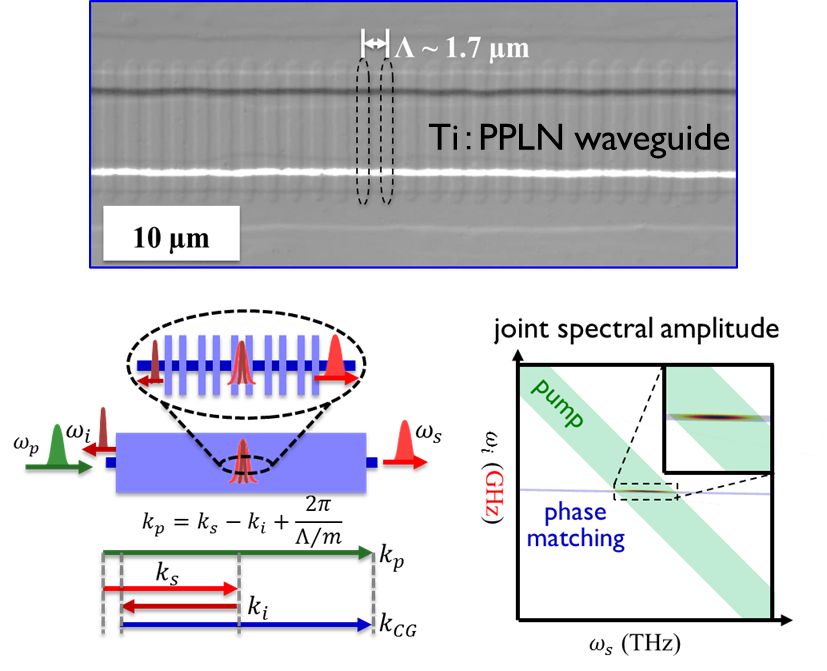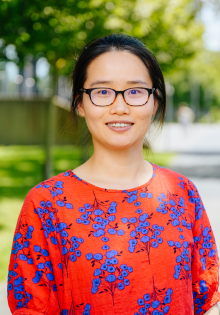Our paper entitled “Counter-propagating photon pair generation in a nonlinear waveguide" has been published in Optics Express. In the paper, we present counter-propagating single photon pair generated around 1.5 µm in a periodically poled nonlinear waveguide with short poling periods of 1.7 µm.
Periodic poling technique has emerged as a vital phase-matched approach to generate co-propagating photon pair generations in different nonlinear materials. In last decades, lots of scientific researchers have already considered counter-propagating phase matching, but they could only either propose some theoretical methods, or do classical experiments with very strong laser fields. However, due to the massive challenge of current technology, counter-propagating photon pair generation with a clear spectral and temporal feature in the single photon level has not been reached.
Here, we demonstrate for the first time the ability to achieve counter-propagating photon pair generation in a nonlinear lithium niobate waveguide with a poling period around the photon-wavelength range. Before, there was no way to bridge the frequency bandwidth gap between the flying qubits in quantum communication and stationary qubits in quantum memories without sacrificing the correlation between photon pairs: one is larger than THz, and the other is less than GHz. Now, we can easily bridge such bandwidth gap via counter-propagating photon pair direct generation in a deeply poled lithium niobate waveguide with ultra-short periods around 1.7 µm. Owe to the successful progress in technology, it makes the investigation of spectral and temporal joint behavior of counter-propagating single photon pair generation possible. We show that, by exploiting a counter-propagating phase-matching, separable quantum states can be directly generated. This benefits many quantum applications, especially for the quantum memory and quantum repeater. Furthermore, our experiments indicate that lithium niobate is potentially suited to provide counter-propagating phase-matching in both nonlinear and quantum fields with properties that go far beyond conventional co-propagating processes.
Based on these aspects, we strongly believe that our work will have a great impact and open a new research direction for nonlinear, integrated and quantum optics.


